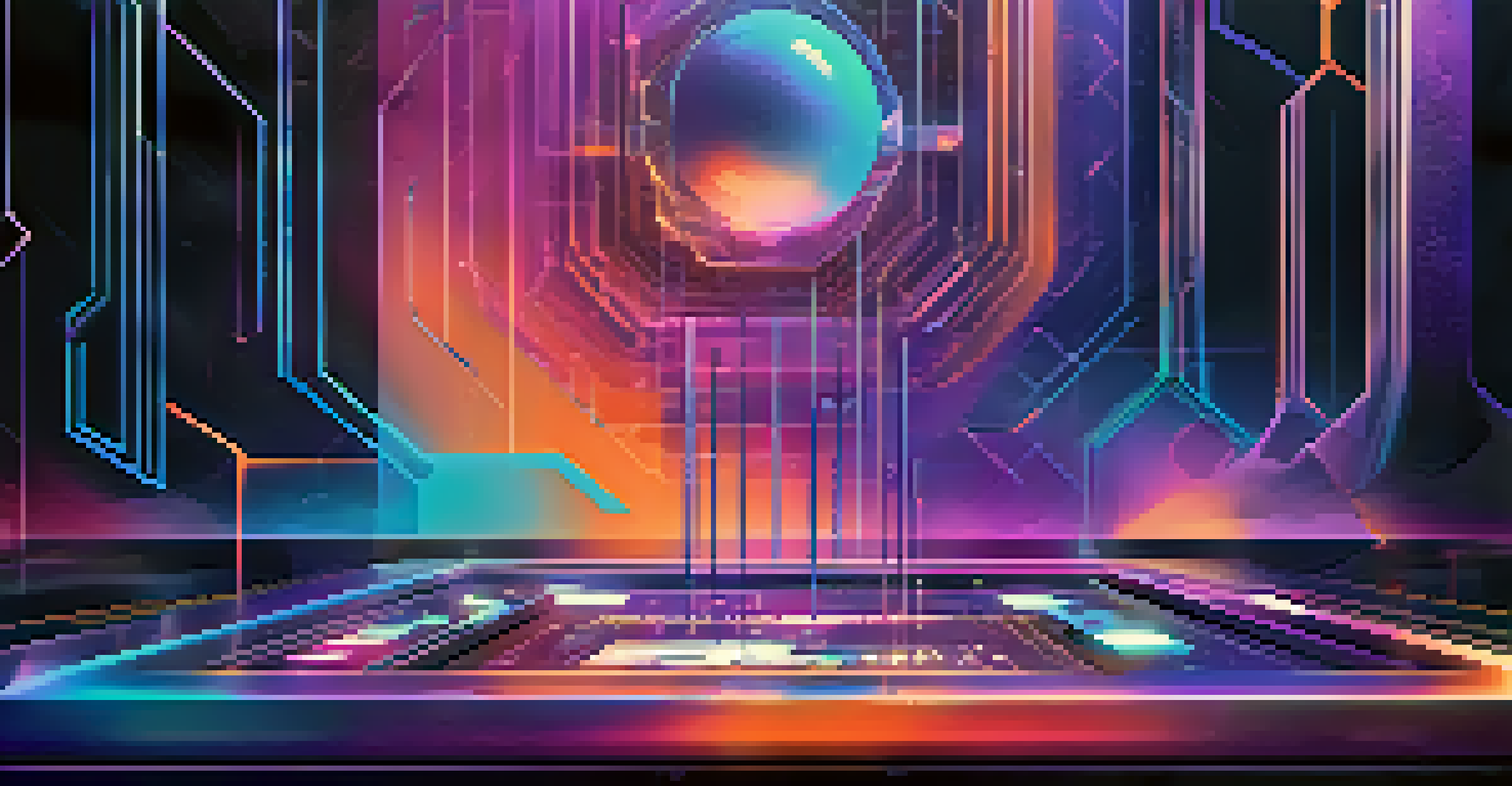The Future of E-Books: NFTs as Ownership Proof

Understanding E-Books and Their Current Landscape
E-books have transformed how we read, offering convenience and accessibility at our fingertips. With just a few clicks, we can dive into vast libraries without the need for physical storage. However, this convenience often comes with a lack of true ownership, as many platforms retain the rights to the content we purchase.
The future of literature is not just about reading; it's about ownership, community, and creativity.
The traditional model of e-book ownership typically revolves around licenses rather than outright ownership. In essence, when you buy an e-book, you’re often just purchasing permission to read it rather than owning a tangible product. This can lead to limitations such as inability to resell or transfer the book, which can be frustrating for avid readers.
As we move further into the digital age, the conversation around ownership is evolving. Readers are starting to seek more control over their digital libraries, leading to the question: how can technology facilitate true ownership in the e-book industry?
What Are NFTs and How Do They Work?
NFTs, or Non-Fungible Tokens, are unique digital assets verified through blockchain technology. Unlike cryptocurrencies such as Bitcoin, which are interchangeable, NFTs represent something distinctive, making each one unique. This uniqueness is what allows them to serve as proof of ownership for various digital items, including art, music, and potentially e-books.

When you purchase an NFT, you acquire a verified token that proves your ownership of that particular digital item. This proof is secured through a decentralized ledger, which means it's virtually impossible to counterfeit or duplicate. In the context of e-books, NFTs could provide a way for readers to truly own their digital content, complete with the ability to resell or trade if they choose.
E-Book Ownership vs. Licensing
Many e-books are purchased through licenses, limiting true ownership and the ability to resell or transfer.
Understanding NFTs requires some familiarity with blockchain technology, but it doesn't have to be daunting. Think of it as a digital certificate of authenticity that provides a layer of security and ownership that traditional e-book licenses often lack.
The Intersection of E-Books and NFTs
As the digital reading landscape evolves, NFTs present an exciting opportunity to redefine how we think about e-book ownership. Imagine purchasing an e-book as an NFT, granting you the rights not only to read it but also to resell it or lend it to friends as you would with a physical book. This could create a more dynamic market for e-books, where readers can buy, sell, and trade digital titles freely.
In a digital world, owning a piece of art or literature should feel as tangible as holding a book in your hands.
In this scenario, authors and publishers could also benefit from a more equitable system. By selling e-books as NFTs, creators can ensure they receive a fair share of the profits from secondary sales, creating a sustainable income model. This shift could empower independent authors and smaller publishers who often struggle within the traditional publishing framework.
The potential for e-books as NFTs does not only stop at ownership; it opens doors for exclusive content, limited editions, and interactive experiences. Through NFTs, authors could offer bonus materials or behind-the-scenes access, making the reading experience more engaging and personalized.
Benefits of NFTs for Readers and Authors
For readers, the most significant benefit of NFTs is the assurance of ownership. Unlike traditional e-books, where access can be revoked or licenses can expire, owning an e-book as an NFT means you have a permanent claim to that digital product. This empowerment allows readers to build a personal library that they can keep, trade, or sell.
Authors and publishers can also enjoy the fruits of this new model. With NFTs, they can create a direct connection with their audience, potentially increasing engagement and loyalty. Additionally, the transparent nature of blockchain can provide valuable data insights, helping authors understand their readership better.
NFTs Enable True Digital Ownership
NFTs could revolutionize e-book ownership by allowing readers to possess, trade, and resell their digital books.
Furthermore, NFTs can stimulate the creation of unique and innovative content. Authors may be motivated to experiment with storytelling methods or formats that appeal to the growing NFT community, leading to fresh and diverse literature that enhances the reading experience for everyone.
Challenges Facing E-Book NFTs
Despite the promising potential of NFTs in the e-book space, there are notable challenges that need addressing. One primary concern is the environmental impact of blockchain technology, particularly energy-intensive processes. As the world becomes more eco-conscious, solutions must be found to mitigate the carbon footprint associated with NFT transactions.
Additionally, the concept of NFTs can be confusing for many readers and authors alike. Without a clear understanding of how NFTs work, skepticism may arise, hindering widespread adoption. Educational initiatives will be crucial in demystifying NFTs and making the concept accessible to everyone involved in the literary ecosystem.
Lastly, the current volatility of the NFT market poses risks to both readers and authors. Prices can fluctuate dramatically, which may deter some from participating. Establishing a stable and trustworthy marketplace for e-book NFTs will be essential for fostering confidence in this emerging model.
The Role of Technology in NFT Adoption
Technology will play a critical role in the successful adoption of NFTs in the e-book industry. User-friendly platforms that simplify the buying, selling, and trading of e-book NFTs can attract a broader audience. Innovations in wallet technology and transaction processes will also be necessary to ensure that readers feel comfortable navigating this new landscape.
Collaborations between tech companies and publishers can help bridge the gap between traditional publishing methods and the emerging NFT paradigm. By working together, these stakeholders can create solutions that meet the needs of both readers and authors, ensuring a seamless transition into this new realm of ownership.
Challenges in NFT Adoption
Environmental concerns, market volatility, and the need for education are key hurdles to widespread NFT adoption in e-books.
Moreover, as the demand for digital content continues to grow, the integration of features like augmented reality and interactive storytelling could further enhance the appeal of e-books as NFTs. By leveraging technology to create unique reading experiences, the industry can attract tech-savvy audiences and redefine the future of literature.
Looking Ahead: The Future of E-Books and NFTs
As we look toward the future, the intersection of e-books and NFTs presents an intriguing landscape full of possibilities. The potential for true ownership, enhanced reader engagement, and sustainable income for authors makes this development worth watching. It's a shift that could turn the traditional e-book model on its head.
While challenges remain, the ongoing dialogue around NFTs and digital ownership is already starting to reshape the way we think about literature. Readers are becoming more vocal about their desire for genuine ownership and meaningful connections with authors, paving the way for innovative solutions.

In conclusion, as technology continues to evolve, so will our reading experiences. By embracing the potential of NFTs, we may soon find ourselves in a world where e-books offer the same sense of ownership and community as traditional books, all while ushering in a new era of creativity and connection in the literary world.